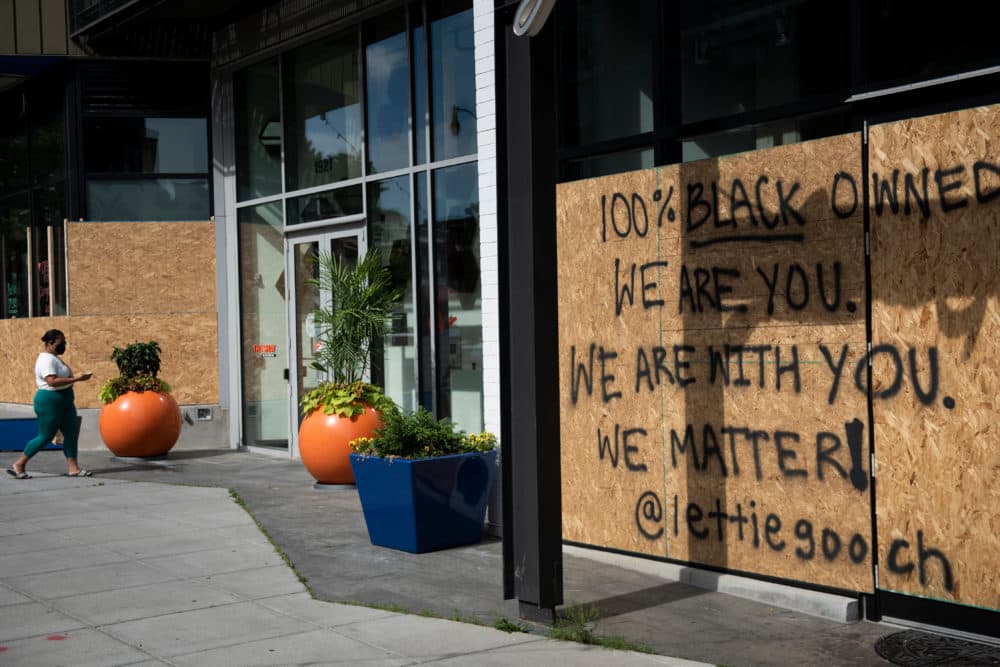Advertisement
40 Acres And A Mule: How Post Civil War Policy Kicked Off Racial Wealth Inequality

On the same day George Floyd was killed at the hands of police in Minneapolis, a white woman falsely accused a Black man of threatening her life after he asked her to leash her dog in New York’s Central Park.
The incident echoed what has historically been used as a cover by white Americans to stop Black economic progress. Following the Civil War, attacks on Black neighborhoods by white people were often launched under the false claim that a Black man had dared to even look at a white woman.
The destruction of Black property, combined with policies designed to keep Black Americans behind their white counterparts, resulted in the racial wealth gap this country is still facing today, says William Darity, a professor of public policy, African and African American studies and economics, and director of the Samuel DuBois Cook Center on Social Equity at Duke University.
According to a Boston Globe analysis of Darity’s research, the household median net worth for Black families in Boston, Los Angeles, Miami, Tulsa and Washington, D.C., is just $8 compared to nearly $250,000 for white families.
This is attributed to the economic racial divide that was kicked off after the Civil War, Darity says, when Black Americans who were formerly enslaved were promised 40 acres of land and a mule. But the vast majority didn’t get the land they were promised.
“I think approximately 40,000 of the formerly enslaved actually got settled on 400,000 acres,” he says. “But if you look at the full range of land that was supposed to be assigned to the formerly enslaved, there was only a very small share of the total that was actually distributed.”
To make matters worse, President Andrew Johnson reversed this policy and restored ownership of that land to former slave owners.
This happened at the same time the Homestead Act provided land to white Americans in the western U.S., “while the formerly enslaved received no form of restitution,” Darity says. “And I would argue that that's the beginning of the contemporary racial wealth gap in the United States.”
Compounding this situation, Black Americans who were fortunate enough to own property constantly faced danger from whites. For a period of about 80 years, a series of white massacres took place across the U.S. that “destroyed Black lives, destroyed Black property and in many instances resulted in the appropriation of Black property by white Americans who engaged in mob violence,” he says.
Advertisement
The summer of 1919 was known as “the red summer where there were upwards of 36 of these massacres that took place north and south,” including in Elaine, Arkansas, and Chicago, Darity says.
“The Chicago case was precipitated by a 17-year-old Black man swimming across this imaginary line that was functioning as a boundary in Lake Michigan between where Blacks could swim and where whites could swim,” he says. “And he was stoned to death by whites.”
When the Black community tried to avenge his death, white mobs destroyed large sections of the Black community, equaling more than $1 billion in today’s currency, Darity says.
Then in 1921, a white mob burned the Greenwood Section of Tulsa, Oklahoma, which was a wealthy Black community, after a Black man was accused of assaulting a white woman who was working as an elevator operator in a downtown building. More than 300 Black Americans were killed.
These massacres wiped out a generation of Black wealth, Darity says, but there were also policies during this period that restricted Black economic progress, known as the Black Codes.
“These laws essentially controlled Black family life, Black mobility, and they were designed in such a way that not only did they determine which occupations Blacks could be channeled into, but they also prevented Black workers from leaving jobs unless it was at the discretion of the white employer,” Darity says. “It was a form of re-enslavement.”
There were also policies that restricted where Black Americans could own property, known as restrictive covenants, he explains.
When those were declared illegal in the 1940s, governments started the process of redlining, “the designation of certain neighborhoods as being unworthy of credit access,” Darity says. It was government-mandated segregation of America’s housing stock.
Following World War II, the G.I. Bill was also administered to keep Black veterans from buying homes, Darity says.
“Southern white legislators in Congress insisted that the bill be designed in such a way that it would be administered locally,” he says, “and local administration of the bill meant that local whites could control who would get the resources among veterans from the bill.”
These policies culminated in the stark racial wealth gap in the U.S. today. The world might be very different if people who were enslaved had received the 40 acres of land they were promised during Reconstruction, Darity says.
“If 40 acres had been distributed to all of the newly emancipated Blacks per family of four or roughly the equivalent, we're talking about an allocation of 40 million acres of land,” he says. “The capacity to transfer resources across generations was deeply stunted for Black Americans.”
Jill Ryan produced and edited this interview for broadcast with Tinku Ray. Samantha Raphelson adapted it for the web.
This segment aired on June 17, 2020.

